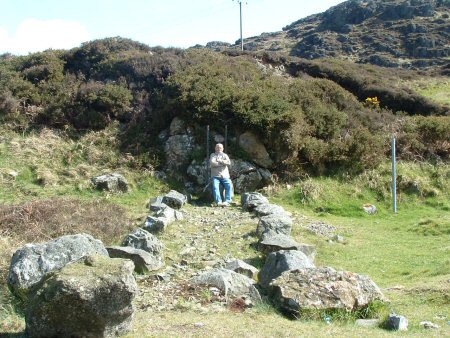The only remaining
Thomas Becket, Archbishop of Canterbury was murdered in his own Cathedral in 1170 (we recently wrote of Newpoint’s success in performing Eliot’s play, Murder in the Cathedral). About this time Norman barons invaded
The ‘Lordship of Ballymascanlon’ which extended as far north as Carrickarnon [on the modern ‘border’] was granted to the Cistercians at Mellifont Abbey in 1185 by the conquering
After the Protestant Reformation when the crowns of Scotland and England were combined in the person of King James, the Ballymascanlon Abbey lands were granted (1608) with tithes, to one James Hamilton – who later became Viscount Clandeboye. He set them tithe free. They were later granted to Sir Garrett Moore, an ancestor of the Marquess of Drogheda who in turn sold them to the Fortescue family. Then they comprised some 16,000 acres including about 200 acres in Kilcurry (birthplace of our Lord Ballyedmond!).
About the year 1688 (troubled times just before William of Orange landed in
The principal seat of the family was
It is said that in penal times, the Catholic Bishop of Clougher Bryan MacMahon lived in hiding in a farmhouse at Ballymascanlon under the name of Mr Ennis (c. 1737).
Of course the most prominent ancient monument in the district is the ‘cromlech’ now known as Proleek Dolmen within the grounds of the Ballymascanlon Hotel and Golf Club. It is sad that such a wonderful construction of our ancient ancestors should be known for a superstition that surrounds it – that one wanting a wish to be granted, should throw a stone on top of the great capstone, it remaining there signifying the granting of the wish! Yet such superstitions may (just may!) have saved its plundering for stone some time in the past. Superstitions often were generated to this end! Another tale ascribes its construction to a giant named as Porrah Baugh MacShruggan (now I just know that someone will adopt that pseudonym on Discussions!). The capstone is known as the Giant’s Head. The supposed burial place of the MacScanlon Chief of Sept of the tenth century is said to lie close by.
The population of the area in the 1831 census was 6339 – consisting of 350 ‘Churchmen’ (adherents of the Established (Protestant) Church), 313 Presbyterians, 7 other Dissenters and 5669 Catholics. Buildings for religious services included two Roman Catholic Chapels, a Wesleyan Meeting House, a Presbyterian Meeting House and a
The rectors of Faughart served the latter as Curates-in-charge. In 1633 the value of the Rectory was
